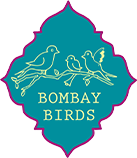Die Bedeutung des Blockdrucks in der indischen Rajasthan-Textilindustrie
Die Kunst des Blockdrucks hat in Indien eine lange und ehrwürdige Tradition, die bis ins 12. Jahrhundert zurückreicht. Im 17. Jahrhundert erlebten die nördlichen Bundesstaaten Indiens eine Wiederbelebung dieser Kunstform, die als Antwort auf die wachsende Popularität während der Kolonialisierung entstand.
Heute, im 21. Jahrhundert, setzen indische Kunsthandwerker diese feine Handwerkskunst fort und bringen einen Teil ihres Erbes und ihrer Kunstfertigkeit in unsere Haushalte. Diese Tradition ist nicht nur ein Zeugnis für künstlerisches Können, sondern auch ein zentraler Bestandteil des bewussten Luxus und der Prinzipien der Slow Fashion, für die unsere luxuriöse, unabhängige Schweizer Marke Bombay Birds steht.
Der Prozess des Blockdrucks
Die Hauptwerkzeuge der Kunsthandwerker sind einfache Blöcke aus handgebogenem Teakholz mit Griffen. Der Prozess des Blockschnitts erfordert viel Geschick, um das gewünschte Design möglichst präzise umzusetzen. Zunächst wird das Motiv freihand auf Pauspapier skizziert und dann auf das gehobelte Holz übertragen. Anschließend wird das Design etwa einen Zentimeter tief eingemeißelt. Jeder Block verfügt über zwei oder drei zylindrische Löcher, die den Luftdurchtritt ermöglichen und helfen, überschüssige Farbe herauszudrücken. Für jede Farbe wird ein separater Block verwendet.
Neu gefertigte Blöcke werden etwa zehn Tage lang in Öl eingeweicht, um die Holzmaserung zu erweichen.
Der Druckprozess
Im nächsten Schritt wird der zu bedruckende Stoff über einen Drucktisch gespannt und mit kleinen Stecknadeln fixiert. Wenn der Block aufgesetzt wird, schlägt der Drucker ihn fest auf den Stoff, wodurch das Muster in umgekehrter Form erscheint. Ein markierter Punkt auf dem Block dient als Orientierung für die Wiederholung des Drucks, um ein homogenes Design zu gewährleisten. Ein hochqualifizierter Umrissdrucker leitet diesen Prozess. Bei mehrfarbigen Mustern verwenden zusätzliche Drucker ihre eigenen Blöcke, um die Farben präzise zu ergänzen.
Die Schätzung der Anzahl der Blöcke, die für das Drucken eines einzelnen Designs benötigt werden, ist beeindruckend. Da jede Farbe ihren eigenen Block hat, verfügt auch jede Komponente des Designs über einen separaten Block. Abhängig von der Komplexität, Farbe, Größe und Reihenfolge nutzen die Künstler mehrere Sets von Blöcken.
Der Abschluss des Druckprozesses
Nach dem Drucken wird der Stoff gedämpft und anschließend in der heißen Sonne Rajasthans getrocknet. Dies fixiert die natürlichen Farbstoffe ohne den Einsatz von Chemikalien und gewährleistet ein hochwertiges, umweltfreundliches Endprodukt.
In einer Welt, in der Schnellmode vorherrscht, schätzt unsere Marke Bombay Birds die Kunst und Tradition des Blockdrucks als Teil unseres Engagements für bewussten Luxus und Slow Fashion. Indem wir diese Techniken unterstützen, helfen wir nicht nur, das kulturelle Erbe Indiens zu bewahren, sondern bieten auch unseren Kunden Stoffe von höchster Qualität und zeitloser Eleganz.


